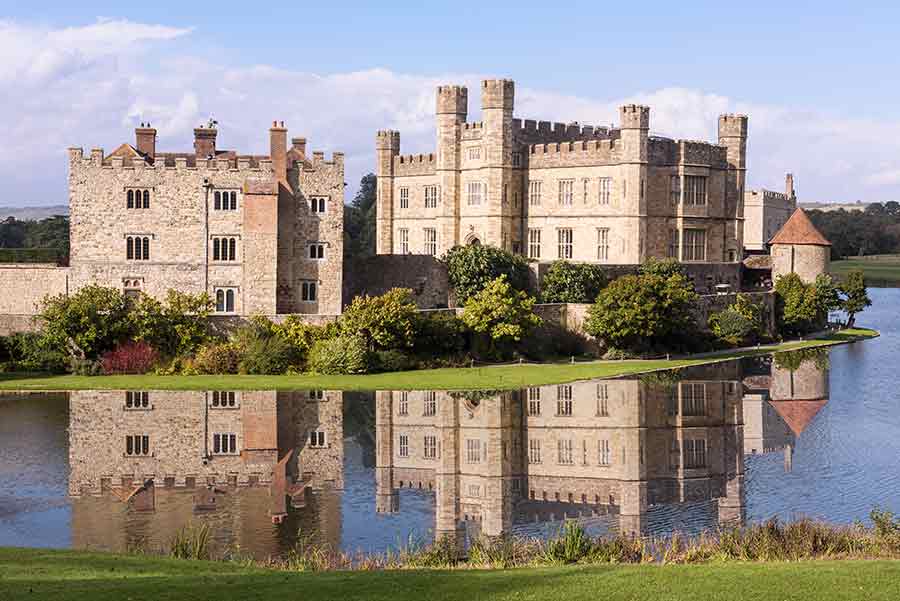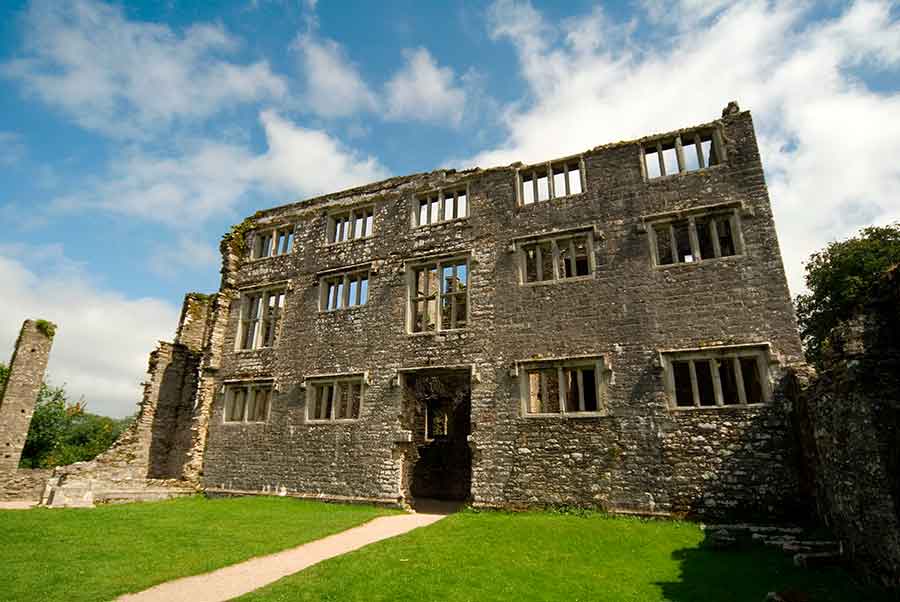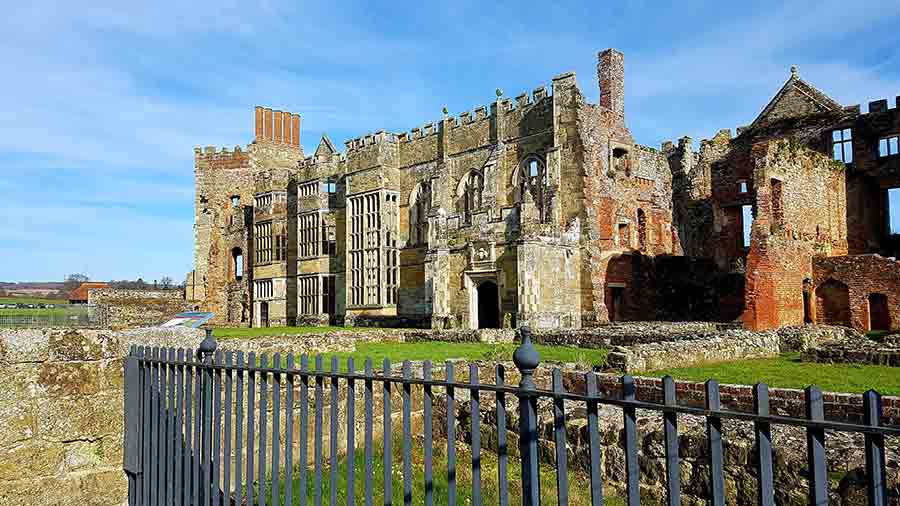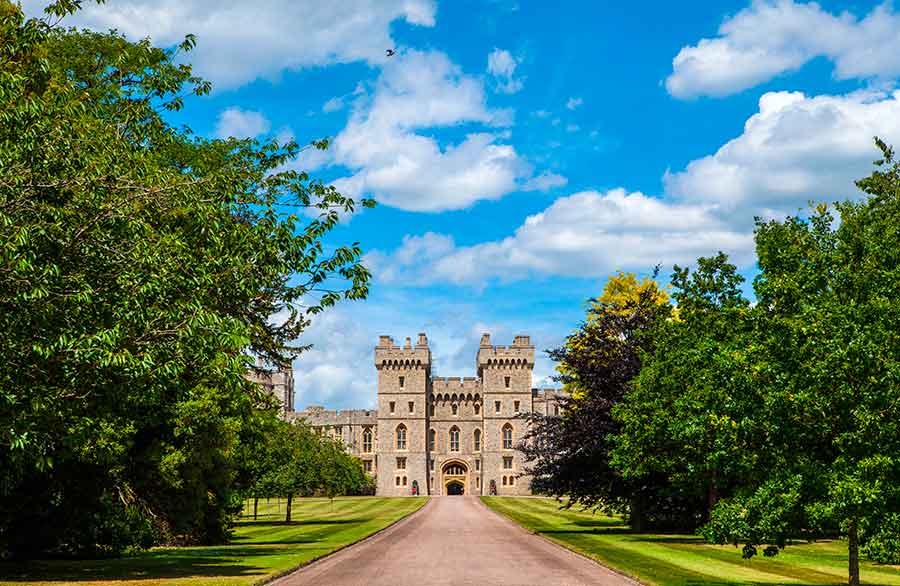There’s no disputing that the UK has some of the best castles around. Our castles are just one of the many magnificent displays of our rich history spanning thousands of years.
But with a huge number of these historic structures dotted around the country – an estimated 1,500 – it makes it that much harder to pinpoint which ones are worth a visit.
To help you out, we’ve put together a list of 15 of the best castles to visit in the UK.
1. Leeds Castle, Kent

Set upon two islands in the middle of a stunning lake, Leeds Castle has been named ‘the loveliest castle in the world’.
It has served as a Norman stronghold, a private property of six medieval queens, a Jacobean country house, and a Georgian mansion. Therefore, it’s no wonder that Leeds Castle has become one of the most visited historic buildings in Britian in the 21st century.
The castle hosts a large range of family-friendly activities to enjoy. From beautiful gardens and adventure golf, to falconry shows, segway tours, and mazes, you’ll definitely need to block out a whole day to visit this castle. There’s also Bed and Breakfast accommodation available in the refurbished Stable Courtyard Bedrooms at Leeds Castle should you wish to stay over!
2. Bamburgh Castle, Northumberland

Situated on the coast of Northumberland, Bamburgh Castle’s written history dates all the way back to 420 AD – making it one of England’s oldest castles still open to explore.
Bamburgh was the home of Victorian inventor William Armstrong, whose descendants still live there now. As a result, it’s one of largest inhabited castles in the country.
Today, guests can enjoy exploring the impressive state rooms, grounds, and striking beach that the castle overlooks. Bambrugh Castle is also never short of family-friendly events, with everything from medieval re-enactments to guest speakers.
3. Warwick Castle, Warwickshire

Warwick Castle has played an important role throughout history and remains one of the most complete medieval castles in England.
Construction of the castle was ordered by William the Conqueror in 1068 – though, at this point it was simply a wooden motte and bailey, before eventually being transformed into a stone castle in the 13th century. Most notably, Warwick Castle was the home of the infamous Earl of Warwick Richard Neville – the ‘Kingmaker’ – during the Wars of the Roses.
Famous for its breadth of activities and spectacular entertainment, you won’t be short of things to do at Warwick Castle. Sit and enjoy the UK’s biggest bird of prey show, or immerse yourself in its history by taking a tour or attending a history talk.
4. Lindisfarne Castle, Northumberland

Lindisfarne Castle is one of the most photographed castles in England, and once you’ve seen it, it’s not had to understand why.
Lindisfarne’s history dates back to the 7th century as it was here that St. Cuthbert established a monastery where from Christianity spread across the North of England. This is why Lindisfarne is known as Holy Island. But while the castle itself might appear to the perfect story-book medieval castle, the building is actually a 20th-century restoration of a Tudor fort that first appeared in around 1550.
Lindisfarne Castle and its surrounding area has plenty to explore – from its rich history, to the Lindisfarne Nature Reserve, which is home to animals and plants that can’t be found anywhere else.
-
HF Holidays Guided Bird Watching in Northumberland*
United Kingdom | 4 nights | Accommodation Included
5. Edinburgh Castle, Scotland

With a long history seving as a royal home, military stronghold, fortress, and prison, Edinburgh Castle is one of Europe’s oldest fortified sites. Set in the heart of Scotland’s iconic capital city, the castle’s scenery will take your breath away.
Today, Edinburgh castle holds the Scottish ‘honours’ – the oldest Royal Regalia in Britain, which were used at the coronations of various well-known monarchs, including Mary Queen of Scots and her grandson, Charles I.
With audio guides and digital tours available, there’s much to uncover at Edinburgh Castle.
6. Berry Pomeroy Castle, South Devon

In the middle of nowhere lies Berry Pomeroy Castle. Although its history dates back to the 11th century when people first began settling here, the castle was officially built in around 1560 by the Pomeroy family and later became the great Elizabethan mansion of the Seymour family.
Berry Pomeroy has been named one of the most haunted castles in the UK, so if you like a spooky adventure, then this is the place for you.
Among others, two female ghosts are believed to haunt the castle. The White Lady – the ghost of Margaret Pomeroy – is said to haunt the dungeons, while the Blue Lady, the daughter of a Norman Lord, can supposedly be heard mourning the loss of her baby.
Today, visitors can take a chilling audio tours which explore the spooky tales further. But if you’re not a fan of ghosts, don’t worry, there’s plenty of other things to see at Berry Pomeroy too – including the Great Hall, defensive Gatehouse, and surrounding woodland walks.
7. Lancaster Castle, Lancaster

With history spanning almost 1,000 years from Roman times to the 21st century, Lancaster Castle is well worth a visit.
The castle is especially known for its ‘dark history’, having been the site of notable trials (including that of witches), hundreds of executions, and for holding prisoners of all degrees until as recently as 2011. Indeed, up until 2011, Lancaster Castle was a fully functioning HM Prison.
As such, a day out at Lancaster differs from many other castles due to the very present-day history it holds, with friendly and knowledgeable tour guides bringing it to life.
Note: While every effort is made to keep the building open for visitors, Lancaster Castle still runs as a Crown Court so it’s not always possible to view all the rooms. As a result, it’s best to plan your visit in advance.
8. Arundel Castle, West Sussex

The home of the Dukes of Norfolk, Arundel Castle has a history dating back to 1067. Today, the stronghold enjoys many of its original features – including a Norman Keep, medieval Gatehouse, and Barbican.
These are mixed with its magnificent Gothic style architecture that was constructed between the 1870s and 1890s and is considered to be one of the great works of Victorian England. And the results are really quite striking.
Visitors can explore the beautiful gardens, historic state rooms, and 14th-century chapel, or enjoy the range of family-friendly events and activities, like medieval festivals and jousting tournaments.
-
Cycling for Softies Sparkling Sussex*
Cycle Ockenden Manor to Bailiffscourt - Cycle Bailiffscourt to Midhurst
UK | 3 nights | Transfers & Accommodation Included
Make an enquiry or call 020 3925 1920.
9. Cowdray Castle, Sussex

Set in the landscape of Cowdray Park, the ruins of Cowdray Castle are that of one of the most important early Tudor houses in England – known to have been visited by both King Henry VIII and Queen Elizabeth I.
Despite being one of the finest Tudor country houses, in 1793 Cowdray suffered a devastating fire while undergoing repairs and refurbishment, which destroyed most of the property. Today, an impressive castle shell remains.
Cowdray Heritage Trust host various events throughout the year, both historic and not. Expect everything from history talks to afternoon teas, and golf events.
-
Cycling for Softies Sussex Beach Break*
Optional Round Trip: Arundel Castle and Littlehampton - Optional Round Trip: Tinwood Wine Estate & Chichester
UK | 3 nights | Transfers & Accommodation Included
Make an enquiry or call 020 3925 1920.
10. Conwy Castle, Wales

Described as one of the most impressive medieval fortresses in Europe, the sight of Conwy Castle is enough to take your breath away. In the distance are the craggy mountains of Snowdonia, and the harbour and streets of Conwy below remain protected by an unbroken 1.3km ring of town wall.
I’s difficult to believe that King Edward I and his architect Master James of St George built both the castle and town wall in just four years, between 1283 and 1287.
Today, thanks to restored staircases in the castle’s great towers, visitors can walk a complete circuit around the battlements of Conwy Castle.
-
Cosmos England, Scotland & Wales*
5% off | United Kingdom | 13 days
11. Dover Castle, Kent

Sitting high atop the iconic White Cliffs on the Strait of Dover, Dover Castle is England’s longest-serving fortress.
Founded by William the Conquerer in 1066, Dover Castle is noted as the site of Henry II’s court in the 12th century.
But its history also stretches to more modern times too and is intrinsically linked with World War II. Most notably, with its top secret underground tunnels, Dover became the headquarters for Operation Dynamo – the dramatic rescue of British and allied troops during the evactuation of Dunkirk in 1940.
Today, visitors can explore Dover’s secret wartime tunnels for themselves, take a walk through the medieval palace, or the discover the nearby Anglo-Saxon church.
12. Framlingham Castle, Suffolk

Framlingham Castle is a striking 12th-century castle that was once the centre of a large network of power and influence. Its remarkable 10.5 metre high curtain wall connects all the way around and remains one of the UK’s most impressive wall walks.
It was at Framlingham that King John laid siege against the barons in 1216, and where Mary Tudor heard that she’d been proclaimed England’s first ruling queen in 1553. For over 400 years the castle was also owned by the Earls and Dukes of Norfolk.
In the heart of breathtaking Suffolk landscape, alongside its history, visitors can also enjoy the stunning parkland and a picturesque lake that surround Framlingham Castle.
13. Windsor Castle, Berkshire

Set at the end of the world-famous ‘Long Walk’, Windsor Castle is the oldest and largest occupied castle in the UK.
It’s been the home of 39 reigning monarchs since it was founded by William the Conqueror in the 11th century, and remains one of the official royal residences of our current queen, Elizabeth II.
Windsor withstood siege during the early 13th-century First Barons’ War, became the military headquarters for Parliamentary forces during the English Civil War, and was a refuge for the royal family during World War II bombing raids.
With its stunning state apartments and famous attractions, including Queen Mary’s Dolls’ house and the Changing of the Guards, Windsor Castle is well worth a visit.
14. Tintagel Castle, North Cornwall

Named as the place ‘where history meets legend’, Tintagel is arguably Cornwall’s most famous castle.
Tintagel is noted for its link with the legend of King Arthur (labelled as the site of Arthur’s conception and birth) and has, for centuries, inspired the imaginations of artists, writers, and even a king himself.
Today, visitors can explore the castle ruins, walk through the remains of houses that were built between the 5th and 7th centuries, and meet Gallos – a life-size bronze statue inspired by King Arthur who watches over the wild Cornwish seas below.
15. Dunnottar Castle, Scotland

Sat on top of a 160ft rock and surrounded by the North Sea on three sides, the dramatic cliff-top ruins of Dunnottar Castle were once the home of the Earls Marischal – one of Scotland’s most powerful families.
While sometimes overshadowed by Scotland’s other well-known castles like Edinburgh, Donnottar is a must-see in its own right. Paradise for lovers of history, geology, and photography, well-said by its own tagline, Dunnottar Castle is ‘once seen, never forgotten’.
Dunnottar dosen’t host planned activities, events, or guided tours, so visitors should expect a more peaceful, self-led day out here, following in the footsteps of figures like William Wallace and Mary Queen of Scots.
-
Fred. Olsen Cruise Lines Coastal & Cultural Scottish Isles*
Stornoway - Lerwick - Cruise by Troup Head, Moray Firth - Cruising by Duncansby Sea Stacks
Scotland & United Kingdom | 5 nights
Departs on 01 Aug 2026 from Rosyth on the ship Balmoral. Gratuities Included.
Final thoughts…
With our nation’s rich history, it’d impossible to compile all of the UK’s top castles into one list. But there are a few stand-out castles that are well worth a visit.
Whether you’re looking to immerse yourself in history or are simply seeking a fun day out, there’s a castle to suit every taste.
For more history or ideas on where to plan your next day out, why not visit the art and culture section of our website?
Francesca Williams is a lifestyle writer at Rest Less. She joined Rest Less in early 2021 after achieving a first-class degree in History at the University of Sheffield and qualifying as an NCTJ Gold Standard Journalist. Francesca writes across a range of lifestyle topics, specialising in health, history, and art and culture. In her spare time, Francesca likes to keep herself busy and enjoys going on walks, playing netball, going to the gym, getting involved with her local church, and socialising with friends and family.
* Links with an * by them are affiliate links which help Rest Less stay free to use as they can result in a payment or benefit to us. You can read more on how we make money here.
Search over 2,000 holiday deals
Whether you’re looking for a last-minute getaway, city break or the trip of a lifetime – our travel section has over two-thousand deals from top providers, with options to suit all budget levels.














